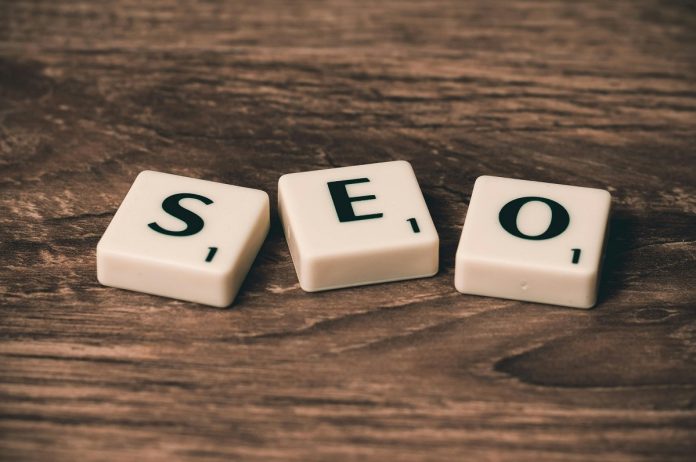In today’s hyper-digital world, having an online presence is no longer optional—it’s a necessity. But merely having a website or a blog doesn’t guarantee that people will find it. That’s where Search Engine Optimization (SEO) comes in. SEO remains one of the most effective ways to attract organic, long-term traffic to your digital assets. As we step into 2025, SEO has evolved to incorporate AI, machine learning, voice search, and user intent more deeply than ever before. However, for beginners, understanding where to start can be overwhelming.
What Is SEO?

SEO, short for Search Engine Optimization, is the process of enhancing your website’s content, structure, and relevance so that it ranks higher in search engine results pages (SERPs). When people type a query into Google or any other search engine, they are presented with a list of results that the engine deems most relevant and trustworthy. SEO helps ensure that your content is among those top results.
But SEO is not just about inserting a few keywords into your articles. It involves a strategic combination of technical improvements, quality content creation, mobile and speed optimization, user experience enhancements, and authority building through backlinks. The better your SEO strategy, the more likely your content will appear in front of people actively searching for what you offer. In essence, SEO helps your content work harder and smarter, delivering long-term traffic with no ongoing ad costs.
Why SEO Still Matters in 2025
With the rise of social media, AI-generated content, and even search experiences within apps, some have questioned whether SEO is losing relevance. The answer is a resounding no—SEO in 2025 is more vital than ever. According to recent data, over 8.5 billion searches are performed on Google every single day. That’s a massive opportunity for businesses, content creators, and marketers to reach an actively engaged audience.
Unlike paid advertising, which disappears the moment you stop funding it, SEO provides a sustainable source of traffic. A well-optimized blog post or product page can continue to bring in thousands of visitors years after it’s published. Moreover, SEO targets people with high intent—they’re searching because they need something. That means SEO traffic typically converts better than traffic from other channels.
As competition online intensifies and ad costs skyrocket, investing in SEO gives you a long-term edge. In 2025, SEO is no longer just about visibility—it’s about trust, credibility, and lasting success.
How Google’s Algorithm Has Evolved (2022–2025)
Google’s mission has always been to organize the world’s information and make it universally accessible and useful. But in the last few years, that mission has been supercharged by advanced AI algorithms, such as MUM (Multitask Unified Model) and RankBrain 2.0. These technologies have significantly changed how Google understands language, user intent, and content quality.
Between 2022 and 2025, we’ve seen several impactful changes:
AI Content Detection: Google can now differentiate between human-written and AI-generated content with surprising accuracy. While not all AI content is penalized, generic, low-value AI content that lacks originality is devalued.
Helpful Content Update 2.0: This update emphasizes “people-first” content. Pages that are clearly written to manipulate rankings—rather than to help users—are penalized.
Core Web Vitals Expansion: Technical performance metrics like loading speed, interactivity (INP), and visual stability now play a bigger role in rankings. Google wants websites that are not just informative but also pleasant to use.
Search Generative Experience (SGE): Google now includes AI-generated answers directly in the SERPs. This changes how users interact with search results and forces websites to create content that’s not just findable but indispensable.
Understanding these changes is key for any beginner starting out with SEO in 2025. It’s no longer just about keyword density, it’s about content quality, user value, and technical excellence.
Types of SEO You Must Know
On-Page SEO
On-page SEO refers to everything you can control on your own website to improve rankings. This includes optimizing your content, improving your site’s structure, and ensuring that search engines can easily crawl and understand your pages.
Title Tags and Meta Descriptions: These are the first things users see in the SERPs. A compelling title tag with the target keyword helps both users and search engines understand your page.
Headers (H1 to H6): Proper use of headers not only makes your content more readable but also helps Google interpret the structure and hierarchy of your content.
Keyword Optimization: This means incorporating your target keyword naturally throughout your content, including in the introduction, headings, and image alt text.
Internal Linking: Linking to other relevant pages on your website keeps users engaged and helps search engines crawl more effectively.
-
Multimedia Elements: Using images, infographics, and videos can improve user engagement and dwell time, which in turn may improve rankings.
Off-Page SEO
Off-page SEO refers to actions taken outside your website to impact your rankings. The most important factor here is backlinks links from other websites to your content. These act as votes of confidence in your site’s credibility and authority.
However, not all backlinks are created equal. In 2025, Google favors backlinks that
Come from relevant, authoritative sites
Appear naturally in content (not in footers or sidebars)
Are surrounded by contextually related content
Are earned, not paid or manipulated
Other elements of off-page SEO include brand mentions, social shares, and online reviews—especially for local businesses. All of these contribute to your overall online authority.
Technical SEO
Technical SEO ensures that your site is structured in a way that search engines can crawl, index, and rank it efficiently. Without a solid technical foundation, even the best content may go unnoticed.
Important aspects include
Site Speed: Slow sites frustrate users and get penalized. Use caching, CDN services, and image optimization.
Mobile Responsiveness: Since Google’s indexing is mobile-first, your site must be mobile-friendly.
Secure Connection (HTTPS): Security is a ranking factor and a trust signal for users.
XML Sitemap and Robots.txt: These help guide search engines through your website structure.
Structured Data (Schema Markup): This helps Google understand the context of your content, increasing your chances of getting rich snippets in search results.
Local SEO
If you operate a physical location or serve customers in a specific region, local SEO is essential. It’s all about making sure your business appears in local searches and on Google Maps.
Google Business Profile Optimization: Make sure your profile is complete, accurate, and regularly updated.
NAP Consistency: Your name, address, and phone number should be the same across all platforms.
Local Reviews: Encourage happy customers to leave positive reviews.
Localized Content: Create pages or blog posts that target local keywords or address local events, trends, or services.
SEO Strategy for Beginners in 2025
Set Clear Goals
Start with clarity. What do you want your SEO efforts to accomplish? This could be increasing website traffic, generating leads, boosting eCommerce sales, or simply building brand visibility. When you have specific, measurable goals, your SEO strategy becomes more focused and effective.
Conduct In-Depth Keyword Research
Effective SEO starts with understanding what your audience is searching for. Keyword research tools like Ahrefs, Ubersuggest, or SEMRush help you find terms with high search volume and low competition. Look for long-tail keywords with strong commercial intent—these often have lower competition and higher conversion potential.
Create Value-Driven Content
Content is still king in 2025—but only when it’s high-quality, comprehensive, and genuinely useful. Create blog posts, guides, videos, and infographics that solve problems or answer questions. Aim to be 10x better than your competitors.
Optimize On-Page SEO Elements
Ensure each page follows SEO best practices:
Use target keywords in strategic places (title, meta description, headers, first paragraph)
Optimize images with descriptive ALT tags
Use short, clean URLs
Include internal and external links
Strengthen Technical SEO
Audit your website regularly. Fix broken links, remove duplicate content, and ensure your site is mobile-friendly and secure. Use tools like Google Search Console and Screaming Frog to identify technical issues that could be hurting your rankings.
Build High-Quality Backlinks
Earn backlinks by creating valuable, shareable content. Reach out to industry blogs for guest posting opportunities. Use HARO (Help a Reporter Out) to be quoted in articles. Participate in online communities and forums where your target audience hangs out.
Monitor, Analyze, and Adapt
Track your progress using tools like Google Analytics 4, Search Console, and keyword tracking platforms. Analyze what’s working and where you’re falling short. SEO is not set-it-and-forget-it—it requires constant refinement.
Future-Proofing Your SEO Strategy
As AI continues to reshape search experiences, you must evolve your strategy to remain relevant. Focus on uniquely human content showcasing real experience, authority, and expertise. Prioritize user experience, fast-loading pages, and interactive media that keeps users engaged. With zero-click searches becoming more common, aim to make your site the final destination by offering depth and value.

